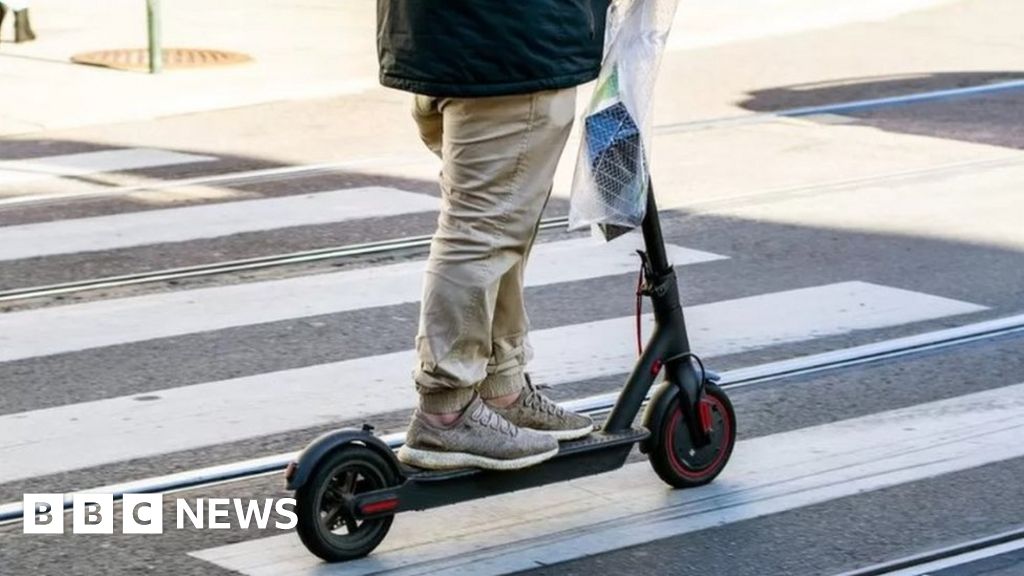More than half of casualties from e-scooter accidents are found outside the zones where you are legally allowed to use them, according to new government figures.
Injuries ranged from cuts and grazes to fractures and head traumas, a report from the Department for Transport said.
Most of the casualties were e-scooter users, but almost a third were other road users, mostly pedestrians.
Most of the casualties were e-scooter users, but almost a third were other road users, mostly pedestrians.
Road safety charity IAM Roadsmart said the figures were “shocking” and demonstrated there was a “wild west” culture on the UK’s streets. It urged the government to speed up legislation governing private e-scooters.
The Department for Transport said it planned to extend city-centre trials of e-scooters until May 2026 and would consult on new regulations “in due course”.
Currently e-scooters can be used within specially designated zones in more than 20 cities in England. Users sign up to an app and are covered by the operator’s insurance. Scooters in those schemes are limited to a maximum speed of 15.5 mph.
E-scooters are also available to purchase, ostensibly for use on private land. However, they have become increasingly popular with commuters and teenagers travelling to school.
Transport charity Collaborative Mobility UK estimates there are 750,000 privately-owned e-scooters in use in the UK.
More than half of casualties from e-scooter accidents are found outside the zones where you are legally allowed to use them, according to new government figures.
Most of the casualties were e-scooter users, but almost a third were other road users, mostly pedestrians.
Injuries ranged from cuts and grazes to fractures and head traumas, a report from the Department for Transport said.
Road safety charity IAM Roadsmart said the figures were “shocking” and demonstrated there was a “wild west” culture on the UK’s streets. It urged the government to speed up legislation governing private e-scooters.
Most of the casualties were e-scooter users, but almost a third were other road users, mostly pedestrians.
Most of the casualties were e-scooter users, but almost a third were other road users, mostly pedestrians.
Road safety charity IAM Roadsmart said the figures were “shocking” and demonstrated there was a “wild west” culture on the UK’s streets. It urged the government to speed up legislation governing private e-scooters.
The Department for Transport said it planned to extend city-centre trials of e-scooters until May 2026 and would consult on new regulations “in due course”.
Currently e-scooters can be used within specially designated zones in more than 20 cities in England. Users sign up to an app and are covered by the operator’s insurance. Scooters in those schemes are limited to a maximum speed of 15.5 mph.
E-scooters are also available to purchase, ostensibly for use on private land. However, they have become increasingly popular with commuters and teenagers travelling to school.
Transport charity Collaborative Mobility UK estimates there are 750,000 privately-owned e-scooters in use in the UK.
#EScooters #casualties #trial #areas
Note:- (Not all news on the site expresses the point of view of the site, but we transmit this news automatically and translate it through programmatic technology on the site and not from a human editor. The content is auto-generated from a syndicated feed.))



